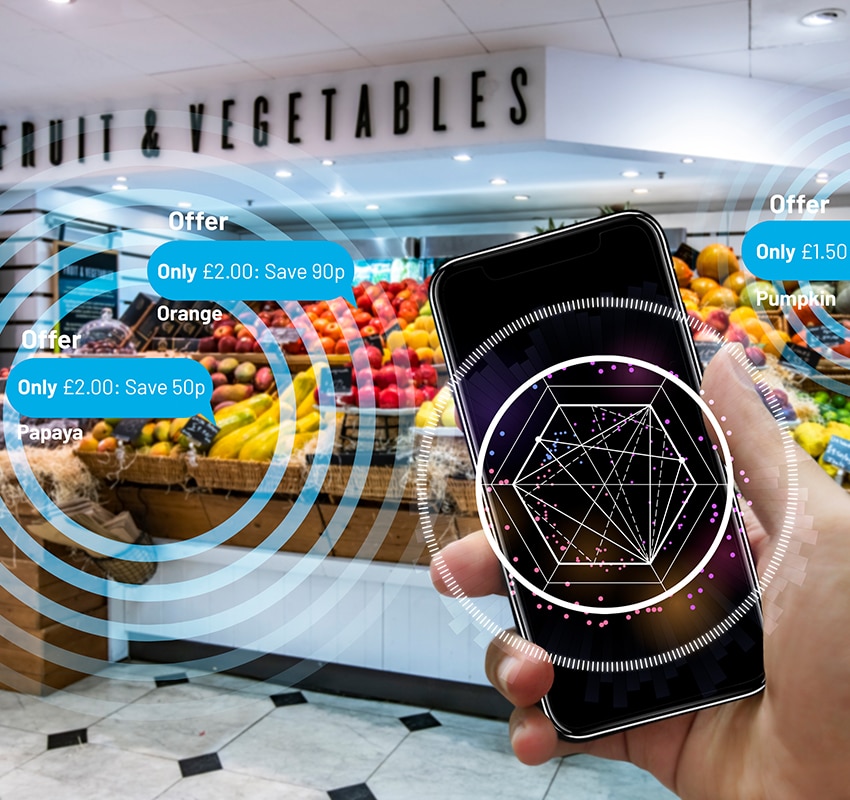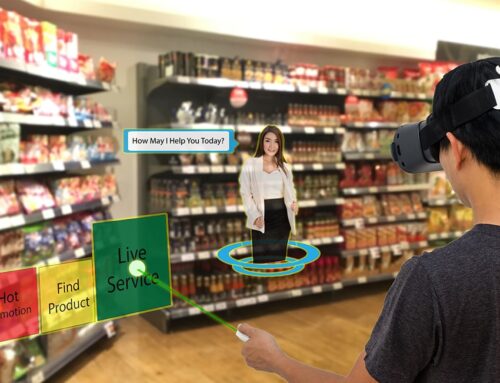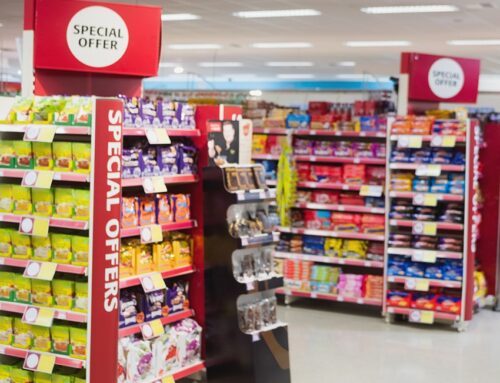6 Emerging Supermarket Advertising Trends You Need to Know
In the ever-changing landscape of grocery shopping, supermarkets must stay up to date with current trends in order to remain competitive. In this blog post, we will look at six key advertising developments that are transforming how consumers shop, and marketing strategies need to be tailored around them.
Key Takeaways
- In supermarket advertising, retail media networks, omnichannel tactics, and private-label brands are becoming more popular.
- Data-driven marketing campaigns, personalization and location-based targeting can lead to increased customer satisfaction.
- Supermarkets are embracing emerging technologies such as AI platforms and augmented reality experiences for engaging customer experiences.
1) The Rise of Retail Media Networks
The retail media industry is seeing exponential growth, as more grocery retailers are setting up their own networks of retail media. To track the effectiveness of campaigns in grocery shopping, brands can connect with potential customers during in-store shopping and online shopping experiences. These vast advertising platforms formulated by food sellers such as supermarket chains and store giants give companies a viable way to connect with their target audience successfully.
When it comes to e-commerce operations, it can be challenging to determine which platform best meets a brand’s objectives due to a lack of standardization across different mediums. Despite that hurdle being present, technology advancements like AI & AR coupled with other successful strategies have resulted in boosting usage rates among retailer’s networkers hoping to take advantage of all features available on these massive adverting hubs produced from this specialized sector, Retail Media.
2) Omnichannel Advertising Strategies
For supermarkets running retail media networks, it is suggested to utilize an omnichannel advertising method in order to reach customers over different channels such as internet, physical stores, and mobile platforms. When online grocery shoppers are worried about food prices, this helps them increase their impact while providing a consistent brand experience.
There are numerous approaches that can be used, such as digital advertisements, social media campaigns, and traditional media, to simultaneously target customers at different stages of involvement.
To make sure there’s no breakage from one channel to another within the retail media sector, supermarkets must stick with similar messaging throughout all outlets, keep up a unified visual language, and maintain reliability on customer service levels in order to satisfy customers’ needs ultimately resulting into loyal clientele building sales figures too!
3) Private Labels Gaining Traction in Advertising
Private label products are gaining popularity in grocery stores as consumers look for high quality at cheaper costs in accordance with rising food prices and inflation. 90% of individuals are concerned about this rising issue, which has exceeded petrol prices in terms of spending concerns. In order to counterbalance these issues supermarkets must find methods that can balance their marketing strategy between established big-name brand products and store ones – making sure they meet customers’ needs while not overstretching budgets too much. As a result, there will be more competition between various companies. Both established brands are competing with retailers who sell their own or “private label” products.
4) Data-Driven Marketing Campaigns
In order to reach shoppers and maximize their promotional campaigns, supermarkets are relying on data-based approaches in marketing. While most grocery shopping habits change over time, several strategies such as personalisation, location targeting, and analytics can be used to increase the overall efficacy of supermarket advertisement.
Exploring more deeply these three specific facets will show how critical they are when it comes to retail store advertising which is why many grocery stores have become reliant on this type of strategy for success.
Personalization
The grocery industry has realized the value of personalizing its services to address each customer’s unique needs. By using data from shoppers, supermarkets are able to design customized messages and promotions that directly increase sales when implemented correctly. Using AI-powered analytics can also help grocers gain an understanding of buyers’ dietary requirements, preferences, and purchase motives. Allowing them to operate retail media networks based on the interests of those particular customers and develop precise pricing models that boost shop profitability.
Not only does this affect consumer satisfaction, but it also increases revenue; businesses have witnessed a 40% increase in spending every shopper session since implementing enhanced personalized marketing techniques. This increases both the retailer’s and the customer’s loyalty and encourages the testing of new products, which boosts overall sales and ensures long-term success!
Location-Based Targeting
Location-based targeting is an advertising strategy that relies on location data to give consumers relevant offers and messages. When used along with retail media networks, this type of marketing can be very effective. The source of the positioning information could include GPS systems, Wi-Fi signals or cell tower triangulation. It will allow advertisers to deliver ads tailored to a customer’s current position.
The advantages associated with such targeted strategies consist mainly of being able to reach individuals within certain geographical areas who have already shown interest in particular products or services by having visited specific places previously.
One downside involves accuracy and cost factors related both to acquiring applicable data and deploying those advertisements accordingly.
Real-Time Analytics
Organizations can use real-time analytics to gain an edge in their decisions and actions as data is generated. It offers a wide range of applications, such as inventory control, customer service optimization, fraud prevention or marketing analysis. Supermarkets are no exception when it comes to the advantages that come with embracing this strategy – they benefit from gaining more insight into consumer behavior while shopping for food items, optimizing advertisement campaigns proactively, and understanding customers better than ever before by targeting advertising efforts efficiently. With the help of all these elements, supermarkets are able to keep ahead of the competition and quickly adapt to changes in their environment, which ultimately helps them succeed.
5) Focus on Healthy Eating and Sustainability
Supermarkets are increasing their emphasis on healthy eating and sustainability in order to appeal to consumers who want ethically sourced and environmentally friendly products. This growing demand for organic produce, sustainable seafood, and plant-based alternatives has become a driving factor behind the promotion of healthier food options which can help supermarkets strengthen customer loyalty while also distinguishing themselves from competitors.
6) Embracing Emerging Technologies
Emerging technologies, such as AI-driven advertisement tools, augmented reality experiences, and digital interactive displays are being used more frequently in supermarkets to create a captivating customer experience. They enable businesses in the sector to stay competitive by meeting customers’ ever-changing needs and expectations.
These advancements have facilitated comprehensive marketing efforts that can reach shoppers effectively while also entertaining them during their visit. These initiatives provide additional advantages like detailed analytics of consumer behaviour which is invaluable information for retailers striving for optimised operations in today’s market climate.
AI-Powered Ad Platforms
AI-powered ad platforms are revolutionizing the way grocery stores operate, by enabling supermarkets to reach their target audience more accurately and optimizing their advertising strategies. Artificial intelligence (AI), machine learning (ML), and automation can improve customer service experience, quality assurance measures as well as inventory control practices while at the same time preventing fraud.
One of AI’s major impacts on this industry is dark store format which has gained immense traction in recent times due to its convenience for customers with accurate orders and reduced design costs associated with POS services for retailers alike.
Given current shopping trends focusing on eCommerce channels like online delivery, businesses like Gopuff or Gorillas have been successful in raising significant funding that highlights the company’s potential on a broad scale. Grocery shopping continues to evolve with the rise of online platforms and convenience.
Augmented Reality Experiences
Augmented reality experiences combine digital information with the user’s environment, providing an interactive experience that blends computer-generated visuals and sounds into their surroundings. This allows individuals to interact directly with virtual content in a natural manner. Supermarkets can employ augmented reality as part of their advertising campaigns, optimizing shopping trips and grabbing customers’ attention while ultimately elevating grocery sales revenue and customer satisfaction.
Interactive Digital Displays
Interactive digital displays are an advantageous addition to store marketing strategies. These include touch screens and offer users a customized experience, as well as the opportunity for collaboration and communication across multiple settings such as stores, workplaces, or educational institutions. They provide customers with engaging interactions that allow them to personalize their shopping journey according to their needs. Despite these advantages, there may be some drawbacks, such as installation and maintenance costs, as well as security concerns that come with interactive technology – not to mention user training, which is required so customers understand how best to use this type of display.
Despite these problems, it has been established that adding interactive digital displays to supermarkets has a significant positive impact on customer engagement, which in turn leads to more successful advertising campaigns and higher sales for companies using this kind of strategy.
Summary
As the grocery industry progresses, supermarkets must innovate and keep their advertising up to date with retail media networks, omnichannel strategies, data-driven campaigns emphasizing healthy eating and sustainability as well as emerging technologies like AI platforms for ads or interactive digital displays. This will help them create engaging experiences tailored to customers’ needs.











